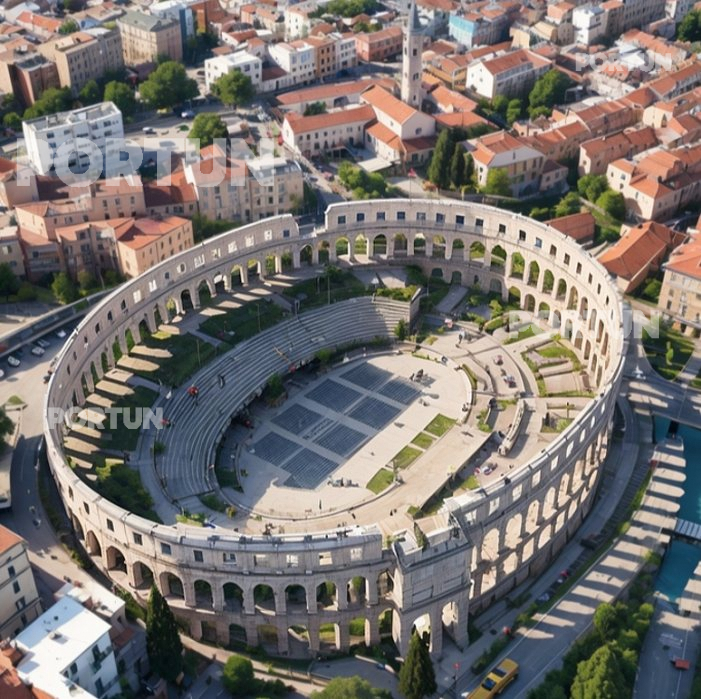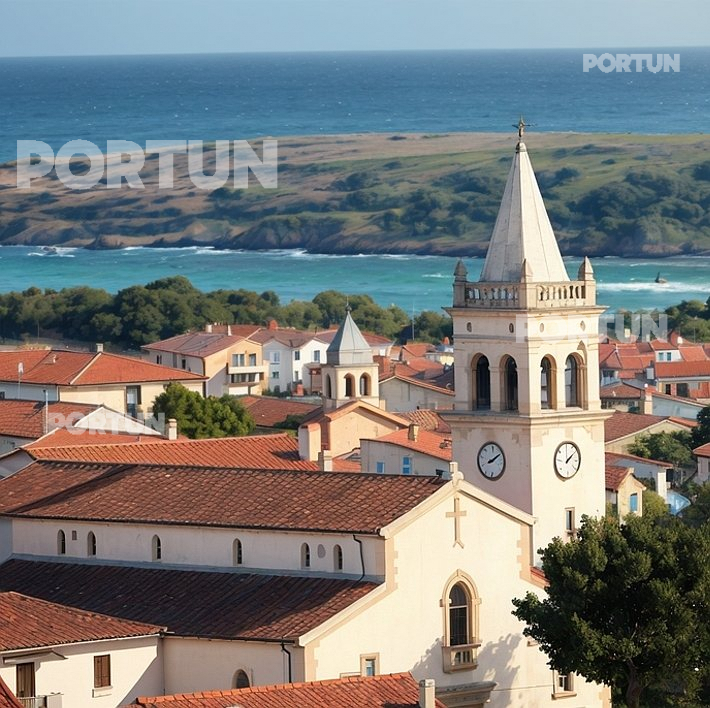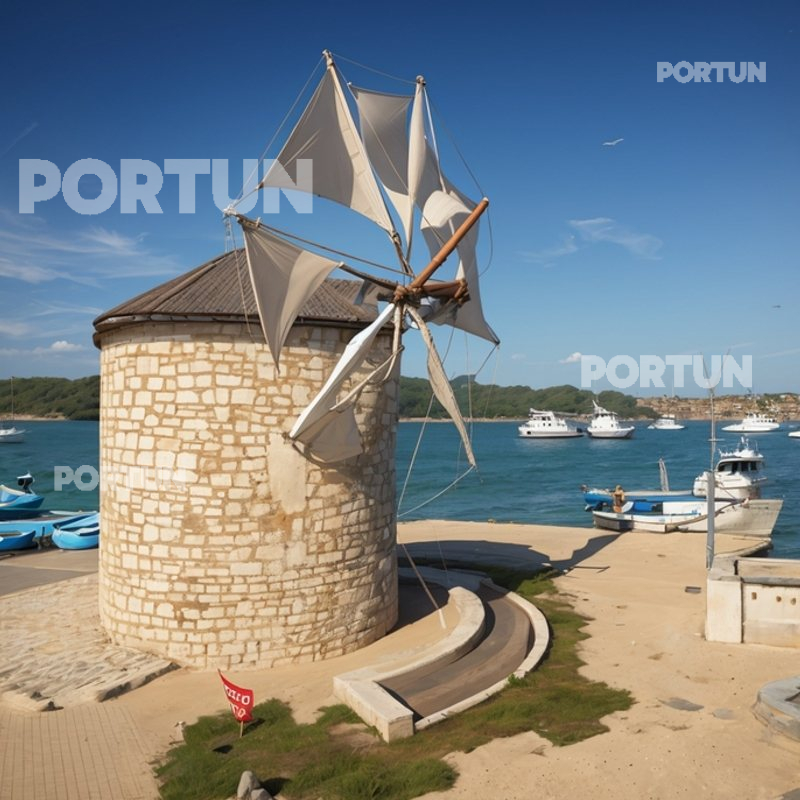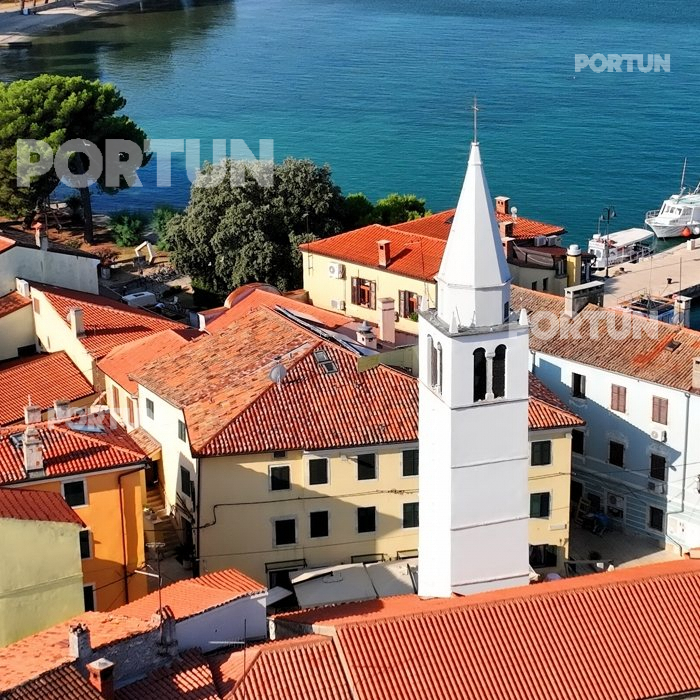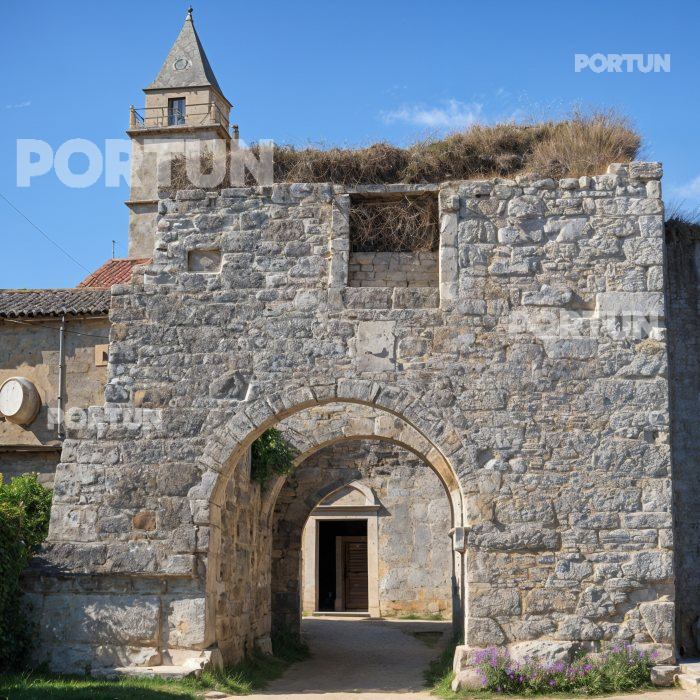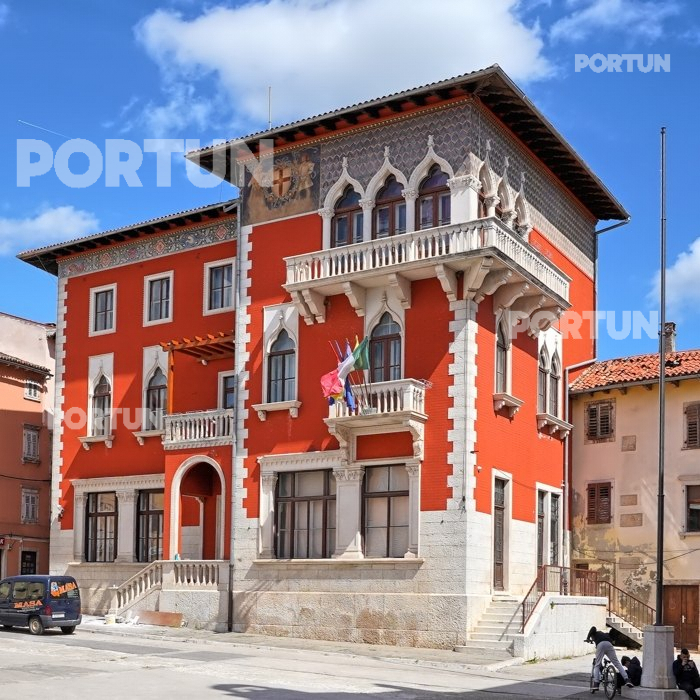This picturesque town, situated on a plateau about 6 km from the sea, offers visitors an incredible blend of inland and coastal beauty. Perched at an altitude of 135 meters above sea level, Vodnjan provides stunning panoramic views of the surrounding landscapes.
The area has been inhabited since prehistoric times and during the Roman era, with the first written records dating back to the 10th century. Under Venetian rule, it became an autonomous unit in 1330, undergoing various phases of authority over time, including Austrian and French rule. Legend describes how seven settlements merged into one larger entity, resulting in the formation of present-day Vodnjan, due to frequent wars and plundering.
In the labyrinth of narrow streets and secluded courtyards, one experiences the atmosphere of a medieval town. Around 1300, a castle with a drawbridge was built, with two towers overseeing the approach. Although the core was not surrounded by walls, the entrances were guarded. The castle was surrounded by public buildings, and today, white stone slabs in the main square mark the former cistern and castle. The most impressive building in Vodnjan is undoubtedly the parish church of St. Blaise, with exceptionally preserved mummies of St. Leon Bembo, St. John Olini, and St. Nicolosa Bursa, while the surrounding area boasts remnants of early medieval and Romanesque churches. The town is now abundant with artistic expressions, evident in over forty murals throughout the city. The Vodnjan area is also known for the highest concentration of ""kažuni"" (stone huts) and dry stone walls in Istria.
All of this makes Vodnjan and its surroundings attractive destinations that combine history, art, and nature, providing an unforgettable experience for visitors.
Real Estate Market in Vodnjan – Overview and Opportunities
Life in Vodnjan – Everything Within Reach
Vodnjan is a charming town in Istria offering everything needed for a comfortable life: a
primary school,
medical clinic,
municipal services,
post office, and everyday shops. Known for its
rich cultural heritage, Vodnjan also excels in daily practicality. Numerous associations, cultural clubs, and sports organizations are active throughout the year, keeping the local community vibrant. The proximity to Pula ensures easy access to additional amenities, and excellent transport connections make daily commutes smooth. This town offers the
ideal environment for families, retirees, and investors seeking peace without sacrificing connectivity.
Why Invest in Real Estate in Vodnjan?
Purchasing
real estate in Vodnjan comes with many benefits. Prices are more competitive compared to coastal towns, and property values are steadily rising thanks to increased interest from both domestic and foreign buyers. The quieter atmosphere and authentic Istrian charm make this area attractive for permanent living, seasonal getaways, or
tourist rentals. The municipality is well organized, and local authorities support new investments.
Settlements Within Vodnjan – Diverse Locations
In addition to the town itself,
Vodnjan encompasses four settlements:
Gajana, Galižana, Peroj, and
Barbariga. Each has its own appeal – Galižana is popular due to its proximity to Pula, Peroj is gaining traction as a tourist destination, and Barbariga is known for affordable apartments near the sea. This variety allows buyers to
choose based on their priorities – whether they seek peace, beach proximity, or investment opportunities.
Property Offer – What’s Available?
Real estate in Vodnjan includes new apartments, stone houses, villas with pools, and building plots. Apartments range from
45 m2 to 100 m2, while houses often exceed
120 m2. Increasingly, properties feature amenities such as pools, sea views, or private gardens, making them especially appealing for holiday rentals.
Houses for Sale – Traditional and Modern
Houses for sale in Vodnjan range from traditional Istrian stone homes to modern villas with panoramic views. Prices vary depending on condition, location, and features, but are generally more affordable than in central Istria or along the coast. Buyers are recognizing the
rental potential of houses, especially those offering privacy and outdoor features such as pools or summer kitchens.
Land Plots – Build Your Own Vision
Land for sale in Vodnjan is ideal for both investors and individuals looking to build their own homes. Current prices range from
€60 to €150 per m2, depending on location, size, and infrastructure. Land in Peroj and Galižana is especially sought after due to proximity to the sea and easy access. Investors view Vodnjan as a
promising area for developing tourist villas or small communities.
Affordability and Investment Potential
One of Vodnjan’s strongest advantages is its
lower prices compared to Poreč, Rovinj, or Medulin. There are also
opportunities to purchase homes in need of renovation at reasonable prices, which can become valuable assets with some investment. For large parcels or multi-unit buildings,
additional price negotiations are often possible.
Renting – Extended Tourist Season
Demand for
property rentals in Vodnjan has been growing steadily. Thanks to good road access and proximity to the sea, the rental season often starts in May and lasts until the end of September. Small apartments and houses with pools are especially sought after. Investors entering the holiday rental market can expect
solid annual returns.
Proximity to Key Towns and Municipalities
Vodnjan’s location offers proximity to major Istrian towns and municipalities such as
Fažana,
Pula,
Ližnjan,
Marčana,
Svetvinčenat, and
Bale. This connectivity allows for flexibility in business, travel, and daily life, making
Vodnjan a strategic hub in southern Istria.














